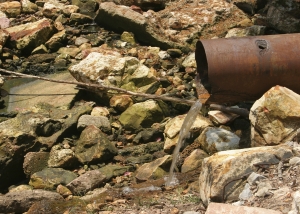“Trust Me, My Property is Worthless:” New Life for Stigma Property Damages?
 A group of homeowners who live in close proximity to a contaminated industrial site claim their properties are worthless, unable to be sold, and devalued on account of the nearby contamination. But, no contaminants have physically impacted their properties.
A group of homeowners who live in close proximity to a contaminated industrial site claim their properties are worthless, unable to be sold, and devalued on account of the nearby contamination. But, no contaminants have physically impacted their properties.
Most courts, including those in Massachusetts, would hold that this allegation is insufficient to give rise to a claim for damages. But in South Carolina, in a 3 – 2 decision by its Supreme Court, it is sufficient to survive until a factual record is developed that would allow the court “to adopt a ‘no stigma damages rule;’ an ‘all stigma damages rule;’ or a modified rule.” Read the South Carolina Supreme Court’s entire decision HERE.
Stigma damage is negative perceptions of the market associated with property that was once contaminated or that is proximate to contaminated property. The “stigma” represents the loss in value based upon actual or perceived risks and liabilities.
What makes this case unusual is that the Court says the homeowners’ allegations raise “a novel question of law.” Claims for stigma damages, however, have been addressed by many courts over the past 30 years. With limited exceptions, most courts do not permit recovery of stigma damages. And most courts, like those Massachusetts, require actual, physical impact of contaminants in order to bring any claim for damages. Property damages are based on tangible damage to personal or real property, not intangible losses.
As the dissent noted: the only injury alleged is “the possible devaluation of their properties, i.e., stigma damages” which in most courts would not serve as a sufficient allegation of damages for purposes of a negligence, strict liability, or nuisance claim.
The court, nonetheless, let the matter to go forward. “Further development of the record may demonstrate that appellants’ property has in fact lost value due to proximity of the property contaminated by TCE, or that the contamination has been remediated and the alleged stigma ameliorated.” Maybe. But I expect that record, if developed, will be less factual, more speculative; and mostly expert opinion on hypothetical, potential future losses.
For now, in South Carolina, the allegation that one’s property is “worthless,” even without physical impact by contaminants, is sufficient to keep a stigma damage claim of alive. Stand by. Perhaps we will see some new law.
Categorized: Uncategorized



